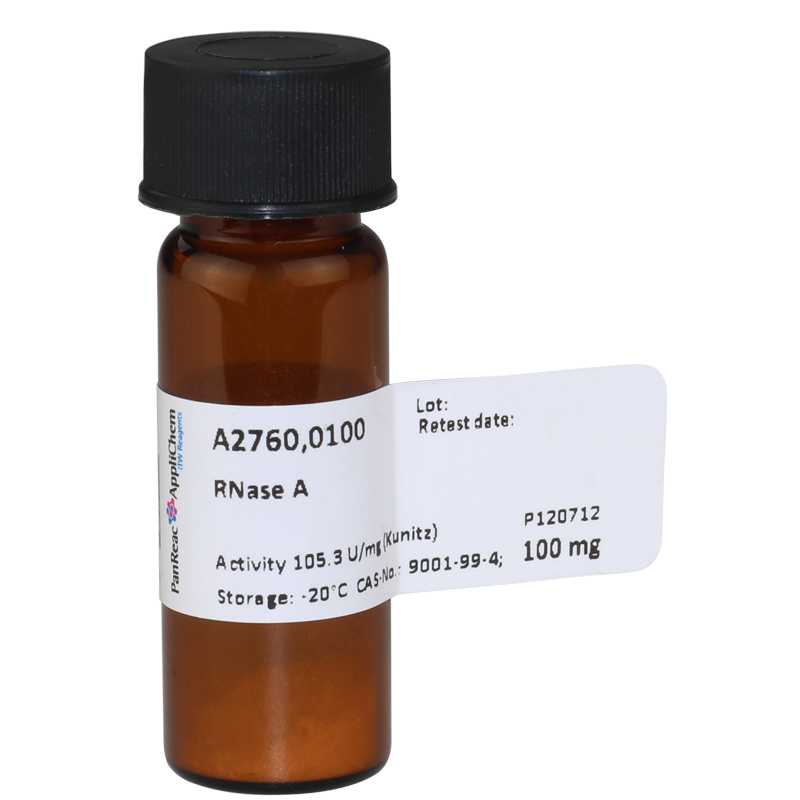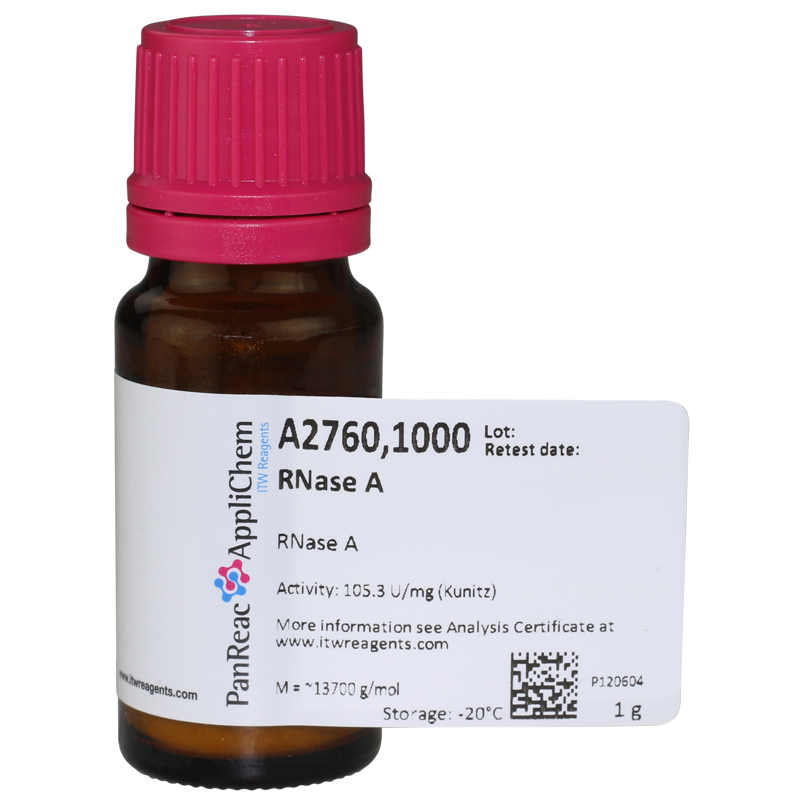Packs sizes (2)
| code | packaging size | price per unit | box price per unit | |
|---|---|---|---|---|
| Code & packaging | Price per piece | |||

|
code
A2760,0100
|
packaging size
100 mg
|
price per unit
single
47,00€
|
box price per unit
|

|
code
A2760,1000
|
packaging size
1 g
|
price per unit
single
240,60€
|
box price per unit
|
Technical data
- Physical Description:
- Solid
- Product Code:
- A2760
- Product Name:
- RNase A
- Short Description:
- delivery form: salt-free, freeze dried
- Specifications:
- Assay: approx. 70 %
Activity: min. 70 U/mg (Kunitz)
- WGK:
- 1
- Storage:
- -20°C
- Origin:
- from bovine pancreas
- EINECS:
- 232-646-6
- CS:
- 35079090






